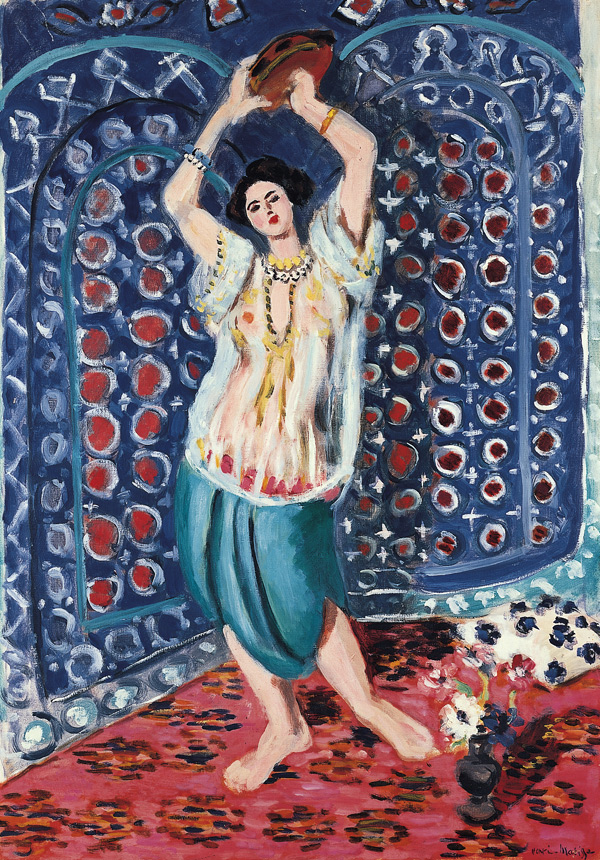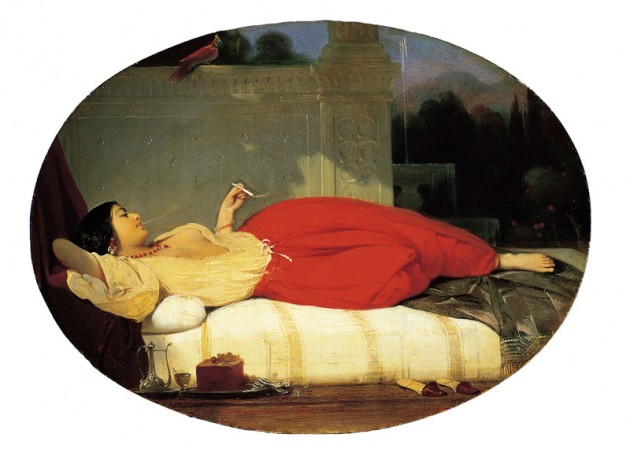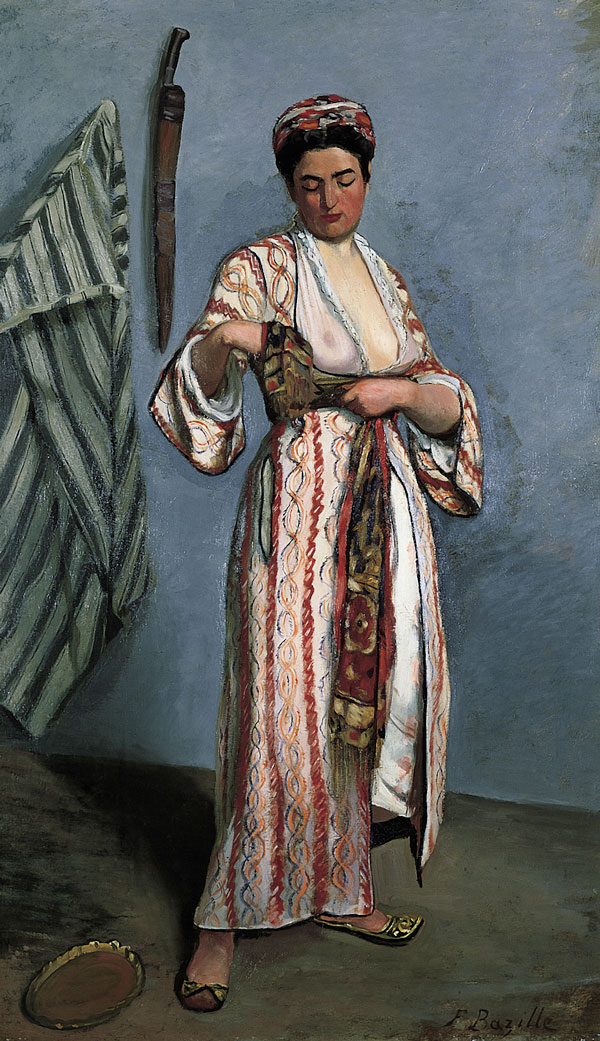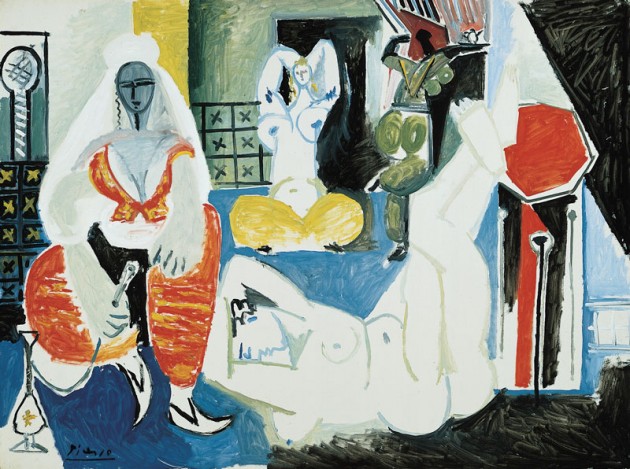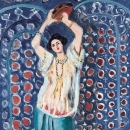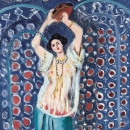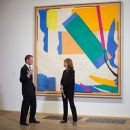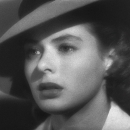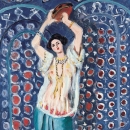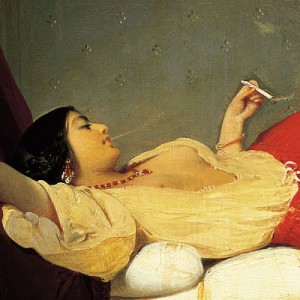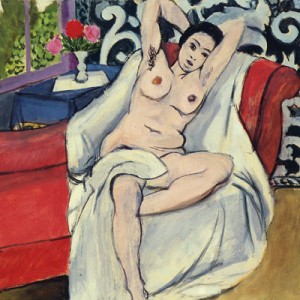Matisse/Odalisque
The odalisque, a harem slave or concubine, was a popular subject in European art throughout the colonial period. These erotic images of women in the geographically vague “Orient” evoked a life of luxury and indolence far removed from nineteenth-century industrial society (and twenty-first century standards of representing race and gender). Indeed pictures of odalisques were often a matter of creative fantasy and invention rather than one of cultural documentation. Harem environments were constructed in the artist’s studio using models dressed in costume and a mélange of exotic props. And artists did not always disguise the fact that their scenes were staged, whether by depicting the odalisque changing into her costume or appropriating imagery from famous precedents. Revealing the picture’s fiction did not detract from its visual appeal.
This small-scale focus exhibition gathers together seven such subjects from the Norton Simon’s collections—including Frédéric Bazille’s Woman in a Moorish Costume (1869), Pablo Picasso’s Women of Algiers, Version "I" (1955), and Henri Matisse’s Odalisque with Tambourine (Harmony in Blue) (1926)—to show how artists exploit the tension between reality and artifice in these images. Matisse, for example, claimed that he made odalisques as an excuse to “paint the nude,” and because he had seen harems firsthand on his trips to Morocco. Yet the numerous odalisques that he produced in Nice in the 1920s revel in the imaginary, with excessively decorative environments that threaten to subsume the female figure altogether. Matisse/Odalisque contextualizes this artist’s distinctive approach to the orientalist theme with a range of examples from the nineteenth and twentieth centuries. It demonstrates that artists consistently accentuated the seductive aspect of the odalisque by foregrounding color, ornament, and dazzling surface effects.

